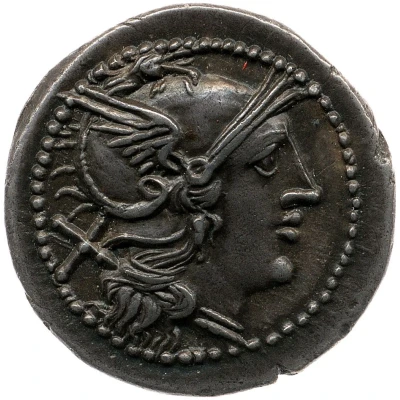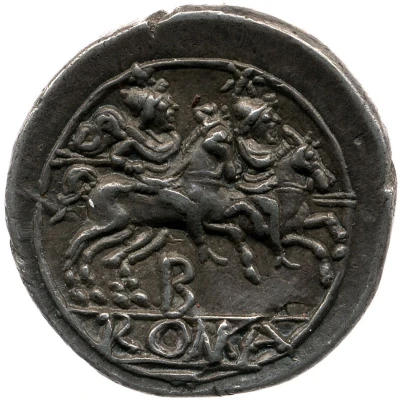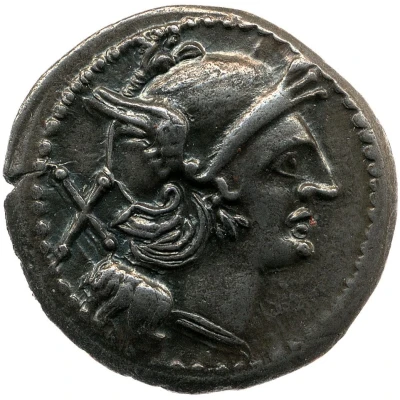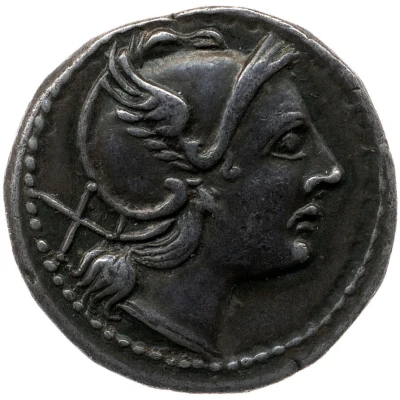
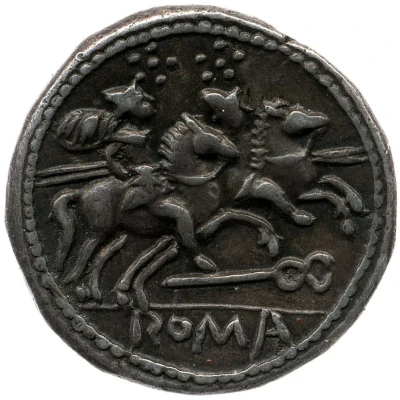

© British Museum
Denarius Caduceus 1; ROMA 211 BC - 208 BC
| Silver | 4.48 g | 20 mm |
| Issuer | Rome › Roman Republic (509 BC - 27 BC) |
|---|---|
| Period | Republic (509 BC - 27 BC) |
| Type | Standard circulation coin |
| Years | 211 BC - 208 BC |
| Value | Denarius (1) |
| Currency | Denarius of 10 Asses (221 – 141 BC) |
| Composition | Silver |
| Weight | 4.48 g |
| Diameter | 20 mm |
| Shape | Round (irregular) |
| Technique | Hammered |
| Orientation | Variable alignment ↺ |
| Demonetized | Yes |
| Updated | 2024-10-06 |
| Numista | N#404066 |
|---|---|
| Rarity index | 100% |
Reverse
Dioscuri galloping right; below symbol of Republican Moneyer Caduceus 1. Border of dots.
Script: Latin
Lettering: ROMA
Interesting fact
The Denarius (Caduceus 1; ROMA) coin features the image of the Roman goddess Libertas, who is depicted standing on the obverse (front side) of the coin, holding a rod and a scepter. This image was meant to symbolize the idea of freedom and the power of the Roman Republic. It's worth noting that the Libertas image on this coin was inspired by the famous statue of Libertas that stood in the Roman Forum, which was erected in 211 BC, the same year that this coin was minted. This statue was a symbol of the Roman Republic's commitment to liberty and democracy, and it became a popular icon of Roman culture. Overall, the Denarius (Caduceus 1; ROMA) coin is a fascinating piece of history that provides a glimpse into the cultural and political values of ancient Rome during the Roman Republic era.
